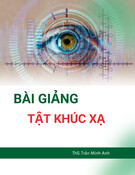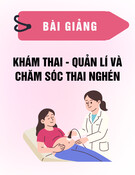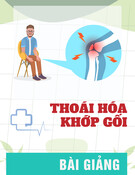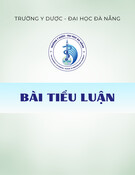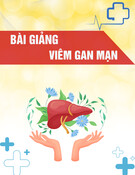Kiểm soát huyết áp tích cực cho bệnh nhân đái tháo đường
TS.BS. Hoàng Văn Sỹ Đại học Y Dược Tp. Hồ Chí Minh Khoa Nội Tim mạch BV Chợ Rẫy
VN1907004582
Huyết áp càng cao, biến cố tim mạch càng tăng
•61 nghiên cứu quan sát, tiền cứu*: 1 triệu người từ 40-89 tuổi
Tỷ lệ biến cố tim mạch tăng tuyến tính theo trị số huyết áp Bắt đầu từ HA 115/75 mmHg: cứ tăng 2 mmHg HA tâm thu sẽ tăng 10% nguy cơ đột quỵ và 7% nguy cơ NMCT tử vong
Tỷ lệ đột quỵ tăng tuyến tính theo số HA tâm thu hay HA tâm trương
Tỷ lệ bệnh mạch vành tăng tuyến tính theo số HA tâm thu hay HA tâm trương
Lewington S et al. Lancet 2002;360:1903–13.
Lợi ích giảm huyết áp
Phân tích tổng hợp: 123 nghiên cứu với 613,815 BN Giảm mỗi 10 mmHg tâm thu, sẽ giảm:
Giảm 13% tử vong do mọi nguyên nhân Không ảnh hưởng quan trọng lên chức năng thận
Ettehad D, et al. Lancet 2016;387:957-976
HA càng thấp không luôn luôn tốt hơn
Đường cong J: HAttr đạt được tại HAtt mục tiêu và kết cục lâm sàng ở bệnh nhân nguy cơ cao trong nghiên cứu ONTARGET và TRANSCEND
^Study population: Patients aged ≥55 years with a history of CAD, PAD, transient ischaemic attack, stroke, or with DM complicated by end-organ damage from the ONTARGET and TRANSCEND trials were included and those with symptomatic heart failure at entry were excluded. The trials randomly assigned 31,546 patients to ramipril, telmisartan, and the combination. *Study outcomes: The primary outcome was a composite of CV death, non-fatal MI, stroke, or hospitalisation for HF. Secondary outcomes included the individual components of the composite as well as all-cause death.
#Reverse causation such as comorbidities, frailty, and progression of cardiovascular disease. CAD, coronary artery disease; CV, cardiovascular; DBP, diastolic blood pressure; DM, diabetes mellitus; HF, heart failure; MI, myocardial infarction; PAD, peripheral artery disease; SBP, systolic blood pressure
4
Böhm M et al. Eur Heart J. 2018. doi: 10.1093/eurheartj/ehy287. [Epub ahead of print]
SPRINT: Hạ huyết áp tích cực làm giảm biến cố tim mạch và tử vong
• Randomized, controlled, open-label trial (N=9,361) conducted at 102 clinical sites in the USA.
Participants were assigned to intensive (target BP <120 mmHg) or standard (target BP <140 mmHg) antihypertensive treatment.
• Primary composite outcome: myocardial infarction, other acute coronary syndromes, stroke,
heart failure, or death from cardiovascular cause
1.0
1.0
0.10
0.10
Hazard ratio with intensive treatment, 0.75 (95% CI, 0.64-0.89)
Hazard ratio with intensive treatment, 0.73 (95% CI, 0.60-0.90)
0.08
0.08
0.8
0.8
0.06
0.06
Death from Any Cause Primary Outcome (MI, ACS, Stroke, HF, CV Death)
Standard treatment
0.6
0.6
Standard treatment
0.04
0.04
Intensive treatment
0.02
0.02
l
l
Intensive treatment
0.4
0.4
0.0
0.0
d r a z a H e v i t a u m u C
d r a z a H e v i t a u m u C
0
1
2
3
4
5
0
1
2
3
4
5
0.2
0.2
0.0
0.0
0
1
2
3
4
5
0
1
2
3
4
5
Years
Years
Study was stopped early, with median follow-up of 3.26 years, due to a significantly lower rate of the primary composite outcome in the intensive-treatment group than in the standard-treatment group (1.65% per year vs. 2.19% per year)
Exclude for Diabetes mellitus!
ACS = acute coronary syndrome; BP = blood pressure; CV = cardiovascular; HF = heart failure; MI = myocardial infarction; SPRINT = Systolic Blood Pressure Intervention Trial. SPRINT Research Group. N Engl J Med. 2015;373:2103–16.
HOPE-3: Hạ HA tích cực ở bệnh nhân nguy cơ trung bình
137.9 ±14.8 mmHg vs 138.2 ±14.7 mmHg 4.0 ±12.9 mmHg vs 10.0±13.1 mmHg
12,705 BN nguy cơ trung bình (không có bệnh tim mạch)*:
‒ HA ban đầu: 138,1/81,9
mmHg
‒ Theo dõi trung vị 5,6
năm
*Nữ ≥ 65t và nam ≥ 55t ≥ 1 yếu tố: • Tỉ lệ W/H ≥0.85 nữ và ≥0.90 nam • Hút thuốc lá trong vòng 5 năm • HDL-C thấp • RL đường máu • Bệnh thận mạn • Tiền sử gia đình bệnh mạch vành
(nam<55t, nữ<65t)
Heart Outcomes Prevention Evaluation: HOPE–3 trial
Eva M. Lonn, et al. N Engl J Med 2016;374:2009-20.
HOPE-3: Hạ huyết áp tích cực không giảm biến cố tim mạch ở bệnh nhân nguy cơ trung bình
Tiêu chí chính: NMCT, đột quỵ, suy tim, tử vong tim mạch, ngưng tim, hay tái tưới máu
Impaired glucose tolerance or early diabetes mellitus: 37%!
Heart Outcomes Prevention Evaluation: HOPE–3 trial
Eva M. Lonn, et al. N Engl J Med 2016;374:2009-20.
ACCORD: Hạ áp tích cực ở bệnh nhân đái tháo đường ▪ Nghiên cứu ngẫu nhiên, đa trung tâm, so sánh hiệu quả giảm biến
cố tim mạch khi điều trị giảm HA tích cực < 120 mmHg so với < 140 mm Hg ở bệnh nhân ĐTĐ type 2 nguy cơ cao. Theo dõi 5.6 năm.
▪ Tiêu chí chính: NMCT, đột quỵ hay tử vong tim mạch.
Kiểm soát HA tích cực không giảm biến cố tim mạch ở bệnh nhân ĐTĐ nguy cơ cao.
Giảm nguy cơ đột quỵ: HR = 0.59; 95% CI (0.39- 0.89);p=0.01
HR = 0.88 95% CI (0.73-1.06)
William C. Cushman, et al. N Engl J Med 2010;362:1575-85
Hạ áp tích cực ở bệnh nhân đái tháo đường
▪ A post hoc, multivariate, subgroup analysis of ACCORD-BP.
▪ Eligible for the analysis in the standard glucose control arm of ACCORD- BP and also had the additional CVD risk factors required for SPRINT eligibility: “SPRINT-eligible”ACCORD-BP participants.
Leo F. Buckley, et al. Diabetes Care 2017;40:1733–1738
Hạ áp tích cực ở bệnh nhân đái tháo đường
▪ A post hoc, multivariate, subgroup analysis of ACCORD-BP.
▪ Eligible for the analysis in the standard glucose control arm of ACCORD- BP and also had the additional CVD risk factors required for SPRINT eligibility: “SPRINT-eligible”ACCORD-BP participants.
MI, any revascularization, stroke, HF, and CVD death (primary outcome of SPRINT)
CVD death, nonfatal MI, and nonfatal stroke (primary outcome of ACCORD-BP)
Leo F. Buckley, et al. Diabetes Care 2017;40:1733–1738
Hiệu quả dài hạn hạ áp tích cực ở bệnh nhân đái tháo đường týp 2
▪ A subgroup analysis of High-risk ACCORDION Trial Participants.
▪ 9 years of follow-up
5 Years of Intensive BP Control and 9 Year Cardiovascular Outcomes Among SPRINT-Eligible ACCORDION Participants
Leo F. Buckley, et al. doi: 10.1111/dom.13248
Hiệu quả dài hạn hạ áp tích cực ở bệnh nhân đái tháo đường týp 2
▪ A subgroup analysis of High-risk ACCORDION Trial Participants.
▪ 9 years of follow-up
Leo F. Buckley, et al. doi: 10.1111/dom.13248
Hiệu quả dài hạn hạ áp tích cực ở bệnh nhân đái tháo đường týp 2 ▪ A subgroup analysis of High-risk ACCORDION Trial Participants. ▪ 9 years of follow-up
Leo F. Buckley, et al. doi: 10.1111/dom.13248
Phân tích gộp hiệu quả Hạ áp tích cực ở bệnh nhân đái tháo đường
▪ A meta-analysis of SPRINT and ACCORD-BP Trial
Rahul Aggarwal, et al. Hypertension. 2018;71:833-839
Phân tích gộp hiệu quả Hạ áp tích cực ở bệnh nhân đái tháo đường
▪ A meta-analysis of SPRINT and ACCORD-BP Trial
Rahul Aggarwal, et al. Hypertension. 2018;71:833-839
Phân tích gộp hiệu quả Hạ áp tích cực ở bệnh nhân đái tháo đường
▪ A meta-analysis of SPRINT and ACCORD-BP Trial
Rahul Aggarwal, et al. Hypertension. 2018;71:833-839
Ảnh hưởng của hạ áp tích cực lên tử vong và biến cố tim mạch và thận ở bệnh nhân đái tháo đường
▪ A meta-analysis of 16 RCT with mean baseline BP 158.3/88.0 mmHg ▪ Intensive BP lowering treatment arm: 136.6/76.7 mmHg vs less
intensive BP arm: 144.9/81.1 mmHg.
Events
RR (95%)
P
All cause mortality
0.82 (0.70-0.96)
0.011
Major CV events
0.82 (0.73-0.92)
0.001
MI
0.86 (0.77-0.96)
0.01
Stroke
0.72 (0.60-0.88)
0.001
CV death
0.73 (0.58-0.92)
0.008
Non CV death
0.97 (0.79-1.20)
0.809
Heart failure
0.88 (0.71-1.08)
0.217
ESKD
1.00 (0.75-1.33)
0.994
Albuminuria progression
0.91 (0.84-0.98)
0.011
Jing Wang, et al. PLoS ONE 14(4):e0215362
Ảnh hưởng của hạ áp tích cực lên bệnh võng mạc đái tháo đường
▪ A meta-analysis of 8 trials randimozing 6989 patients: 3749 vs.
3240 in each arm (intensive vs. conven tion)
Incidence of DR
Jian-Bo Zhou, et al. Diabetes Ther (2018) 9:2015–2027
Tác dụng phụ liên quan tới hạ áp tích cực
Leo F. Buckley, et al. Diabetes Care 2017;40:1733–1738
Mục tiêu điều trị: 2018
▪ General HTN population, regardless of CV risk <140/90 mmHg.
▪ If anti-HTN therapy is well-tolerated, an individualised BP target of ≤130/80
should be considered in most patients.
▪ Elderly patients (both below and above 80 years of age) <150–140/ 90 mmHg.
Office BP treatment target range (mmHg)
Age group
HTN
+ CKD
+ CAD
+ Stroke/ TIA
+ Diabetes
Diastolic treatment target range (mmHg)
<80 to 70 18–65 years Target to <140 to 130 if tolerated Target to 130 or lower if tolerated Not <120 Target to 130 or lower if tolerated Not <120 Target to 130 or lower if tolerated Not <120 Target to 130 or lower if tolerated Not <120
<80 to 70 65–79 years Target to <140 to 130 if tolerated Target to <140 to 130 if tolerated Target to <140 to 130 if tolerated Target to <140 to 130 if tolerated Target to <140 to 130 if tolerated
<80 to 70 ≥80 years Target to <140 to 130 if tolerated Target to <140 to 130 if tolerated Target to <140 to 130 if tolerated Target to <140 to 130 if tolerated Target to <140 to 130 if tolerated
Williams, Mancia et al., J Hypertens 2018 and Eur Heart J 2018, in press.
<80 to 70 <80 to 70 <80 to 70 <80 to 70 <80 to 70 Diastolic treatment target range (mmHg)
ADA 2018 khuyến cáo điều trị huyết áp bằng phối hợp thuốc sớm trên bệnh nhân đái tháo đường huyết áp ≥ 160/100 mmhg
Figure 1—Recommendations for the treatment of confirmed hypertension in people with diabetes.
*An ACE inhibitor (ACEi) or ARB is suggested to treat hypertension for patients with UACR 30–299 mg/g creatinine and strongly recommended for patients with UACR$300mg/g creatinine.
**Thiazide like diuretic; long-acting agents shown to reduce cardiovascular events, such as chlorthalidone and indapamide, are preferred.
***Dihydropyridine calcium channel blocker (CCB)
BP, blood pressure.
Diabetes Care 2019; 42(Suppl. 1):S1–S2 | https://doi.org/10.2337/dc19-SINT01
Điều trị phối hợp bước đầu trong các trường hợp đặc biệt
Preferred combination treatment Classa Levelb
Diabetes RAS blocker + CCB or diuretic I A
Coronary artery disease Beta-blocker + CCB + RAS blocker I A
Chronic kidney disease RAS blocker + CCB + diuretic (loop diuretic)
Cerebrovascular disease RAS blocker + CCB + diuretic I A
Atrial fibrillation Beta-blocker and/or nondi CCB IIa B
Heart failure (r/p*EF) IIa B RAS blocker + beta-blocker, diuretic + aldosterone antagonist
RAS blocker + CCB Chronic obstructive pulmonary disease
Lower extremity arterial disease RAS blocker + CCB or diuretic IIa B
CCB, calcium channel blocker; nondiCCB, non-dihydropiridine CCB, RAS, renin angiotensin blocker, r/p*EF, reduced/preserved ejection fraction.
aClass of recommendation; bLevel of evidence.
Williams B, et al. Eur Heart J. 2018;39:3021–3104.
Blacks Diuretic + CCB I B
Cơ sở phối hợp thuốc
AMLODIPINE/VALSARTAN: 9/10 BỆNH NHÂN ĐTĐ ĐẠT HUYẾT ÁP <140/90 mmHg
NC RCT, 926 BN
91.5
Allemann et al. J Clin Hypertens 2008 (In press)
Hiệu quả giảm huyết áp trên nhiều phân nhóm bệnh nhân được điều trị với valsartan/amlodipine
*The clinical EXperienCe of amlodIpine and valsarTan in hypErtension study
n
8264
1184
2706
2589
774
Mean baseline BP (mmHg)
160.9/97.1
163.6/93.1
162.7/98.9
161.3/96.6
157.4/80.4
Overall
Elderly (≥65 years)
Obese
Diabetes
ISH
0
g n
-4.1
–10
i t t i s n a e m n
i
) g H m m
n o
(
-14.3
-16.1
P B
–20 -16.6
-17.9
i t c u d e r
–30
n a e M
-25.5
-30.3
-31.0
-32.2
-32.2
95% CI (LL,UL)
Overall
Elderly
Obese
Diabetes
ISH
msSBP
−31.42, −30.67
−33.32, −31.07
−32.84, −31.57
−31.01, −29.64
−26.69, −24.30
msDBP
−16.79, −16.34
−14.96, −13.68
−18.26, −17.50
−16.48, −15.67
−4.67, −3.49
AML/VAL: amlodipine+valsartan combination; BP, blood pressure; CI, confidence interval; DBP, diastolic blood pressure; ISH, isolated systolic hypertension; SBP, systolic blood pressure
Assaad-Khalil et al.,Vasc Health Risk Manag 2015;11:71-8
Kết luận
▪ Tăng HA rất phổ biến ở BN ĐTĐ, gây tăng nguy cơ bị các biến
chứng tim mạch, thận… và tử vong lên 2-4 lần. ▪ Biến cố tim mạch gia tăng khi huyết áp càng cao.
▪ Điều trị hạ huyết áp càng tích cực không đồng nghĩa với lợi
ích càng lớn.
▪ Đích huyết áp trong phần lớn dân số tăng huyết áp vẫn nên <
140/90 mm Hg HA. ▪ Hạ tích cực hơn cho các đối tượng nguy cơ cao như bệnh
đái tháo đường và dung nạp được điều trị.
▪ Các thuốc được lựa chọn đầu tay là ACE-I hoặc ARB. Đa số BN


